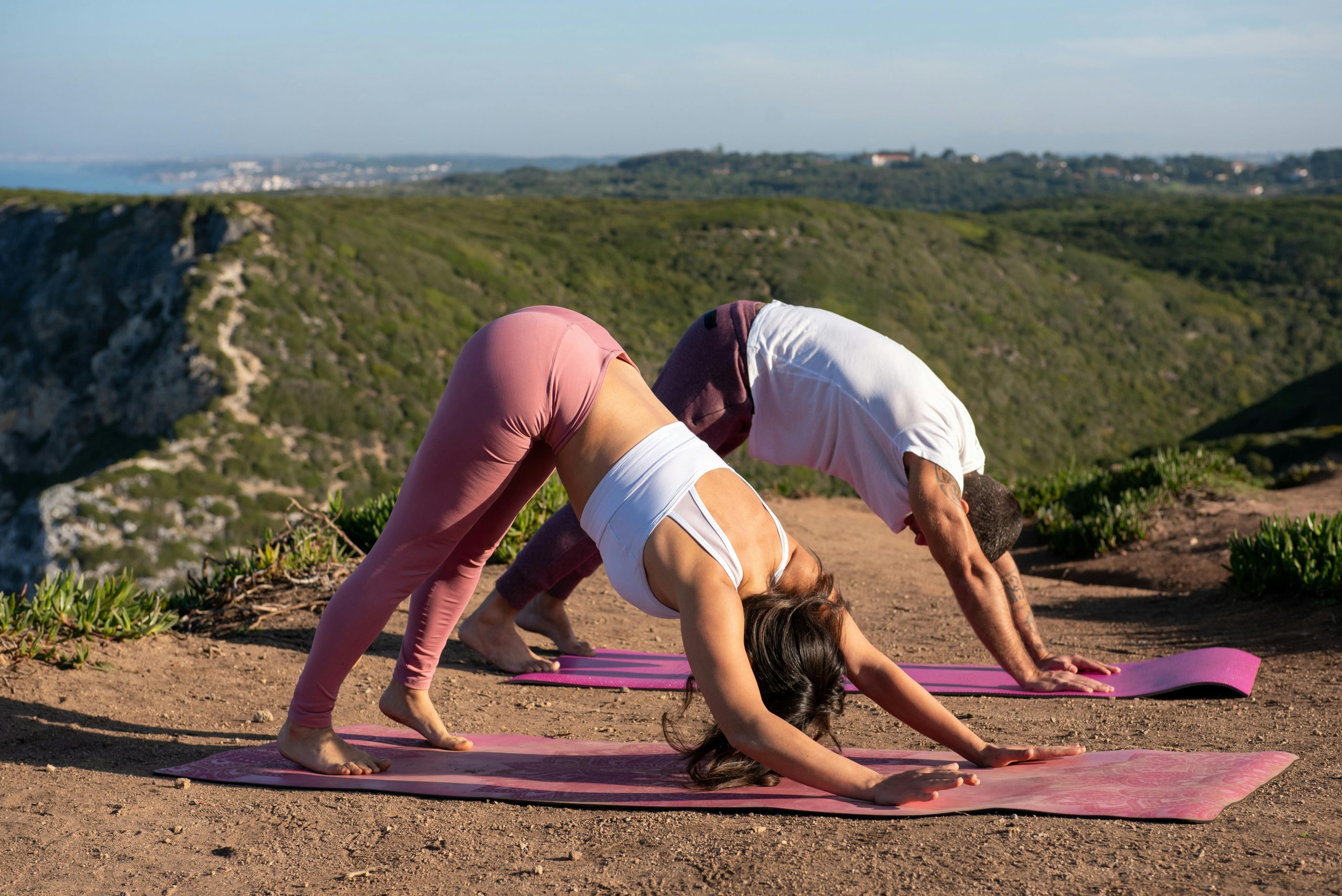In our fast-paced world, it’s essential to find effective methods for managing anxiety and enhancing well-being. One powerful practice that has recently gained popularity is yin yoga. Unlike more dynamic forms of yoga, yin yoga emphasizes gentle, prolonged postures that focus on the body’s connective tissues rather than the muscles. This practice not only improves physical health but also provides significant mental and emotional benefits.
Understanding Yin Yoga
Yin yoga combines the principles of Traditional Chinese Medicine with the physical postures of Indian yoga. The practice targets the body’s connective tissues, which include ligaments, tendons, and fascia.
These tissues form an intricate web that supports and stabilizes our joints, muscles, and organs. By gently stressing these tissues through sustained postures, yin yoga helps maintain their health and flexibility.
Unlike dynamic styles of yoga, often referred to as “yang” practices, such as vinyasa flow or ashtanga, yin yoga is characterized by its slow pace and long holds. Practitioners typically remain in each posture for several minutes, allowing for deep relaxation and introspection. This meditative approach makes yin yoga accessible to individuals of all fitness levels, including those new to yoga.
Physical Benefits
One of the primary physical benefits of yin yoga is improved joint health. Connective tissues, especially those around the joints, can become stiff and prone to injury. By regularly practicing yin yoga, individuals can increase the pliability of these tissues, reducing the risk of joint pain and injuries. This is particularly beneficial for areas prone to stiffness, such as the hips, pelvis, and lower spine.
Additionally, yin yoga enhances flexibility. The prolonged holds in each posture encourage a gradual release of tension in the muscles and connective tissues. Over time, this leads to increased range of motion and improved overall flexibility. For those who spend long hours sitting, whether at a desk or during meditation, yin yoga can alleviate discomfort and improve posture.
Mental and Emotional Benefits
Beyond the physical advantages, yin yoga offers profound mental and emotional benefits. One of the key aspects of this practice is its emphasis on creating a safe space for letting go. As individuals settle into each posture, they are encouraged to release not only physical tension but also the need to control their environment and experiences.
This aspect of letting go is deeply rooted in the philosophy of yin and yang. The yin-yang symbol represents the interconnectedness and balance of opposing forces. In the context of yin yoga, this balance is achieved by embracing both stillness and movement, allowing practitioners to find harmony within themselves. This balance is especially important for individuals dealing with anxiety, as it promotes a sense of calm and equanimity.
Regular participation in yin yoga workshops can lead to a heightened sense of well-being. Many practitioners report feeling a distinct sense of relaxation and contentment after a session. This is attributed to the energetic release that occurs when tight areas of the body are gently stretched and opened. It’s as if the cells in these areas begin to communicate more freely, fostering a sense of vitality and well-being.
Practical Considerations
To reap the benefits of yin yoga, it’s important to approach the practice mindfully. Here are three key principles to keep in mind:
- Find Your Edge: In yin yoga, the “edge” refers to the point where you feel a stretch or sensation without experiencing pain. It’s important to approach this edge respectfully, avoiding excessive strain. Each day, your edge may vary based on factors such as hydration and overall energy levels. By listening to your body and adjusting accordingly, you can find a position that is challenging yet comfortable.
- Cultivate Stillness: Once you find your edge, the next step is to become still. This involves allowing the muscles around the stretched area to relax completely. It can be tempting to fidget or adjust the posture, especially if discomfort arises. However, by committing to stillness, you encourage a deeper release of tension and a more profound meditative experience.
- Hold the Pose: In yin yoga, postures are typically held for several minutes. This extended duration allows for a gradual deepening of the stretch and a more significant energetic release. Holding a pose for at least one minute can provide noticeable benefits, while longer holds of two to five minutes or more can enhance concentration and tolerance for physical and emotional change.
It’s worth noting that while yin yoga can be practiced daily, it’s essential to listen to your body. Avoid pushing through pain or discomfort, and be mindful of any sensations of tingling or numbness. Yin yoga workshops often provide a supportive environment where you can learn these principles under the guidance of experienced instructors.
Conclusion
Yin yoga offers a unique approach to physical and mental well-being by targeting the body’s connective tissues and promoting deep relaxation. Its gentle, sustained postures make it accessible to individuals of all fitness levels, while its emphasis on letting go and finding balance resonates deeply with those seeking relief from anxiety. By incorporating regular yin yoga practice or attending yin yoga workshops, individuals can experience improved joint health, increased flexibility, and a heightened sense of well-being. Whether you’re new to yoga or a seasoned practitioner, yin yoga provides a valuable tool for enhancing both physical and emotional health.
.






